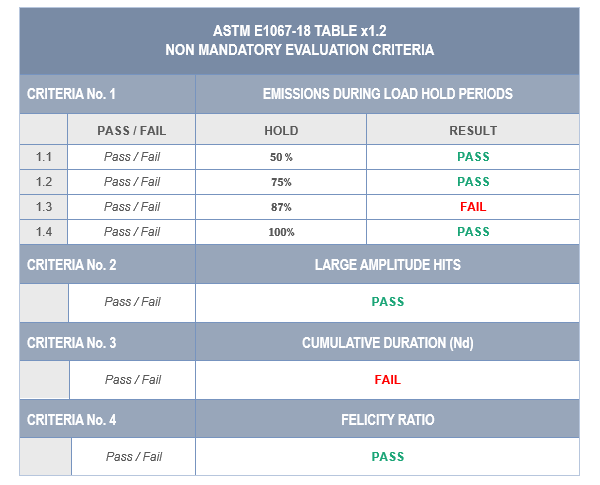| |
EXAMPLE AE EXAM
| |
Testing Overview
Acoustic emissions are elastic energy waves that are spontaneously released by a material undergoing deformation. Acoustic emission testing is defined as a “passive” inspection method for monitoring the dynamic internal stress redistribution within a material that occurs when an external stress is imposed on a component. The stress can be either a hydrostatic, pneumatic or thermal. In an acoustic emission test a network of piezoelectric transducers are attached to the exterior of a vessel. These sensors convert mechanical energy such as elastic waves into an electric impulse that is transmitted by cable to the AE Instrument.
As the vessel is stressed, the AE instrumentation collects signals. Parameters from each emission are measured and then stored within the system data logger. Data from each sensor is stored on separate channels along with the exact time when the event was detected. These data are analyzed both during and after the test. Acoustic emission serves an important function in the oil, chemical, paper and petrochemical industries, to name a few. It is a global non-destructive examination technique, which provides a measure of the structural severity of a defect. As such, it is complementary to other non-destructive examination methods such as radiography, ultrasonic, and visual which are used for examination of local areas. Prior to the development of acoustic emission, hydrostatic test was the principal global test. This Inspection method is designed to detect structurally significant defects and damage in vessels that can occur during fabrication and under normal operating conditions. This test will only detect defects that are stressed during the course of the test. Defects in unstressed areas and passive defects (structurally insignificant during the applied load) will not generate AE.
Some of the defects that can generate AE are as follows:
• Crack Growth • Fiber breakage • Stress corrosion micro cracking / liner matrix failure • Delaminations • Entrapped air pockets / Manufacturing flaws
• Inadequate design for the applied stresses.








